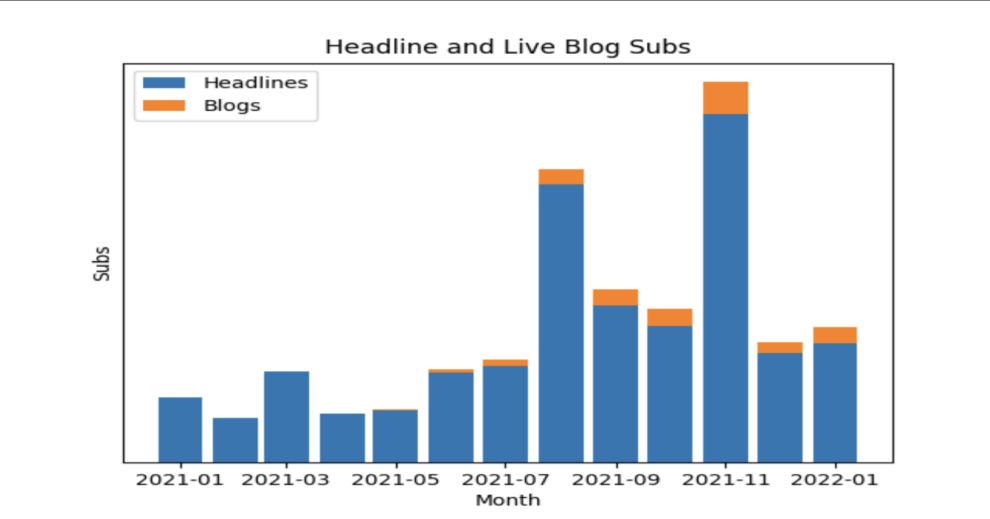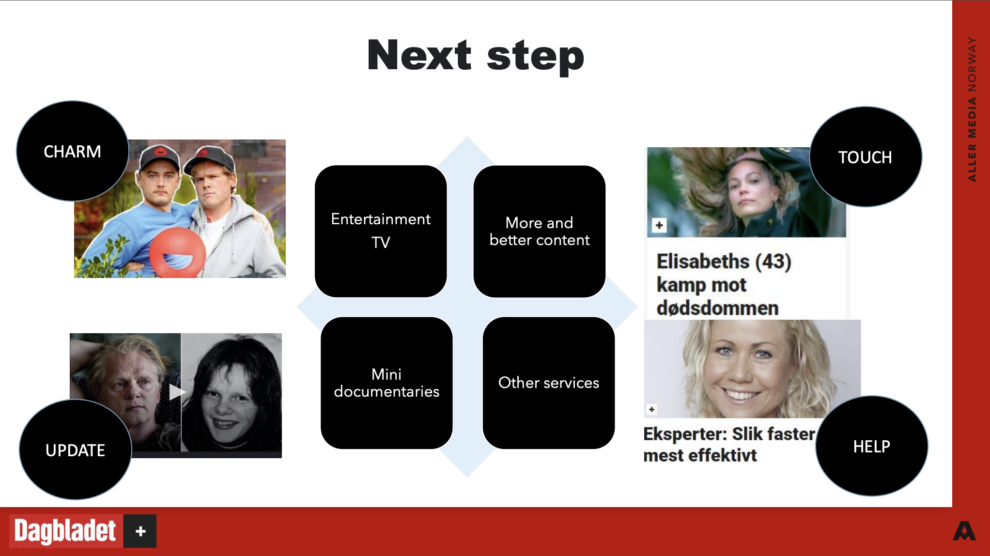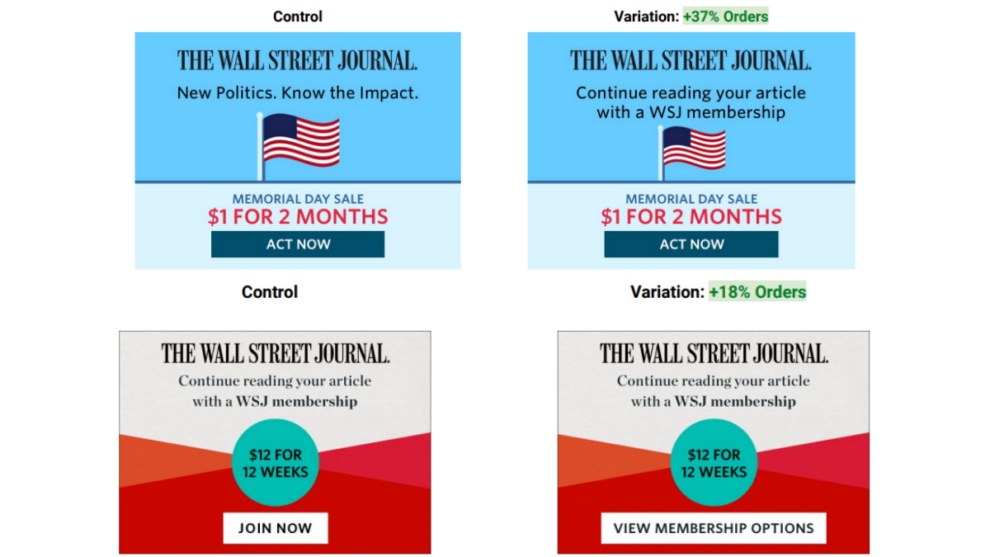This month’s INMA Subscription Summit was full of great knowledge sharing from across the publishing industry. We’ve reviewed the 15 hours of insightful talks and handpicked the 9 cases that surprised us most.
#1. ePaper still sees increasing demand
At Twipe, we are prominent believers in the power of editions, and it appears we’re not alone! L.V. Navaneeth from The Hindu joined the summit to explain about the ongoing growth at the Indian publisher. Despite launching their ePaper in 2006, The Hindu only launched their ePaper subscription in 2014. With readers looking towards editors to curate their days news, the demand for ePaper has been 1.5x the demand for website and daily news apps over the past 22 months.
“While we live in an era of unlimited choice, we are also burdened by too much noise”
L.V. Navaneeth, CEO The Hindu
L.V. Naveneeth puts this story of success down to people trusting The Hindu’s editors. Inside the edition, subscribers also get access to exclusive news and views from international sports stories to the “Text & Content” section which deep dives into the worlds’ events.
The future for the ePaper looks bright. During the summit, a poll saw 47% state that their ePaper is included in the premium digital package, with just 6% not offering an ePaper. Building on this, 39% responded that over 75% of their subscribers have access to the ePaper. The ePaper plays a clear strategic role for publishers and this shouldn’t be neglected. Get in touch to learn how we help with your ePaper strategy.
#2. Bundling local and national news worked
Much has been written about the news being broken in recent years. Now, publishers must rebundle it to create a partner in life product. Paul Fichtenbaum, Chief Content Officer from The Athletic told the summit that the digital sports publisher seized this opportunity by offering a sports product like no other: a bundle of specialised local content alongside reporting on national sports stories.
This is a product many had struggled to set up, with ESPN culling journalists and Sports Illustrated undergoing a refit. The success has been so that after reaching 1 million subscribers in 4 years, the outlet was bought out by The New York Times to help with the next stage of their growth.
#3. Using adblockers for premium product growth
Norwegian publisher Dagbladet may have 80,000 pure digital subscribers, but they also have 1.3 million daily users. To convert these, Dagbladet focus heavily on their front page, something vitally important for a tabloid. Visitors to Dagbladet’s front page will never see an article they have previously read. New content encourages readers to stay longer on their homepage. Dagbladet also work intelligently with Adblockers. Free readers who visit Dagbladet’s content whilst using an adblocker will have their ads blocked… but replaced by Premium+ paid for articles. This is a clever way of exposing premium content and offerings in a non-invasive way to maintain a freemium feeling.

#4. Freemium can drive growth
Freemium products ensure the reach of journalism stays wide. Many of these freemium providers also offer a paid level and exposing this effectively is a crucial conversion tool. L.V. Navaneeth at The Hindu explained that information through the news must be democratised hence why the publisher offer 10 free article a month. To that end, he believes that those who pay subscriptions are the ones kindly funding the ability to allow access for all.
After struggling to expand their subscriber base, in September 2020 The Athletic began to experiment with free content. The publisher launched free “Headline” articles and later live blogs to expose content to new audiences. These were often sponsored with ads and included links to premium articles in a bid to push subscribers towards the paywall. The success of their conversion has been drastic and is demonstrated in the graph below.

#5. The endless stream of content is not working anymore
Meinolf Ellers (DPA) and Christoph Mayer (Schikler) presented the results of the DRIVE project. With 16 publishers from the DACH market, this is probably one of the largest data gathering project collaborations in the publishing industry. The experiment centred around “Media Time”, the cumulative time spent on a website or app by a single user over a 7-day period. From this, it is possible to predict conversion and churn of digital subscriptions. Research found that an increase of 10 minutes media time a week resulted in a 130x conversion probability, and 50% less churn probability. Our own research with KU Leuven discovered that time is rather a constraint in people’s lives as opposed to a variable to maximise. Therefore, it is important for publisher to be able to design products that can fit both into the live of a scanner and a long reader.
The consortium also monitored how far people scroll down to read articles. As expected, articles at the top of a page receive more engagement, with the numbers reducing as the page goes down.
“This endless stream of content is not working anymore”
Christoph Mayer, Partner and Managing Director, Artificial Intelligence, Schickler
Therefore, the study found that a new approach to navigating content is needed away from endless vertical scrolling. Trials are ongoing with a Netflix style 16:9 layout to expose more personalised content at first glance. In a time of 24/7 news, people are developing news fatigue and leaving without reading an article and solving this is key to the future of news. Perhaps finite experiences and editions are the answer?
#6. Same content, more uses
Back in Norway, Dagbladet revolutionised their content offering with a new and improved bundle. The publisher has adopted a digital first approach with the paper team taking content from the Dagbladet+ premium content pool. In a bid to reuse their content, Dagbladet have embraced the world of WebTV. They have started creating entertainment TV and launched documentaries based on the work of their investigative journalists. This gives new life to their written work and is a way to bring in a new audience.

#7. Brand building investment finally taking off
Whilst converting heavy readers and boosting their engagement is a sure-fire focus across publishing, many neglect other potential subscribers. Darya Ushakova, VP of Consumer Marketing at the Philadelphia Inquirer explained that their marketing team have undergone an internal transformation to shift their focus to look at the whole funnel and build their potential subscriber pool through brand awareness. To do this, the publisher have experimented with refocusing their budget. 41% is now dedicated to brand awareness, and 27% goes to conversion. This is a bold approach in a bid to bring in new readers and one we are excited to monitor.
#8. Less is more
Bild-ing on this success, Bild rethought their subscription process to give readers a smoother payment experience. The publisher got rid of 2 product offers so that just 1 product is presented to their customers. They did this after experimentation and finding that it wasn’t worth the potential revenue uplift by higher prices as they made more revenue on their conversions with less products.
Most readers come to Bild to read the headlines. The publisher therefore got rid of their offer pages and added their subscription offer inside their article. Visitors no longer have to undertake extra steps and go through to subscription pages. Upselling to yearly subscriptions and other bundles now takes place once a reader is subscribed so they don’t distract readers with confusing offer pages. With 593,000 subscribers, Bild are on the way up.
“The less we distract readers, the faster they go through the checkout and back to the article that they want to read”.
Daniel Mussinghoff, Director Premium, Bild, Axel Springer
This trend was also covered at the summit by Chris Taylor, CIO at The Telegraph. Speaking about the path to their bold 10.1.23 strategy, Chris expressed the need for focus and simplification. We are proud to see that their unified app co-developed with Twipe is recognised as their “Hero Product” to achieve this important goal.
#9. Small experiments can bring big results
Not all experiments have to be high tech. Peter Gray, VP of Product at Dow Jones explained that the publisher has had success with some simple testing: changing copy. By changing the text in their button from “Join Now” to “View Membership Options”, the publisher saw 18% more orders. A figure that is already impressive is dwarfed by the uplift of 37% order The Wall Street Journal when they invited readers to “Continue reading your article with a WSJ membership” instead of using the caption “New Politics. Know the Impact”. Here, experimentation with a more human touch has brought fantastic results. This is why Peter believes that “experimentation is the best business tool that has ever existed”.

Thanks to INMA for organising such an inspiring event. We’re looking forward to meeting in person at the next edition in Oslo.
